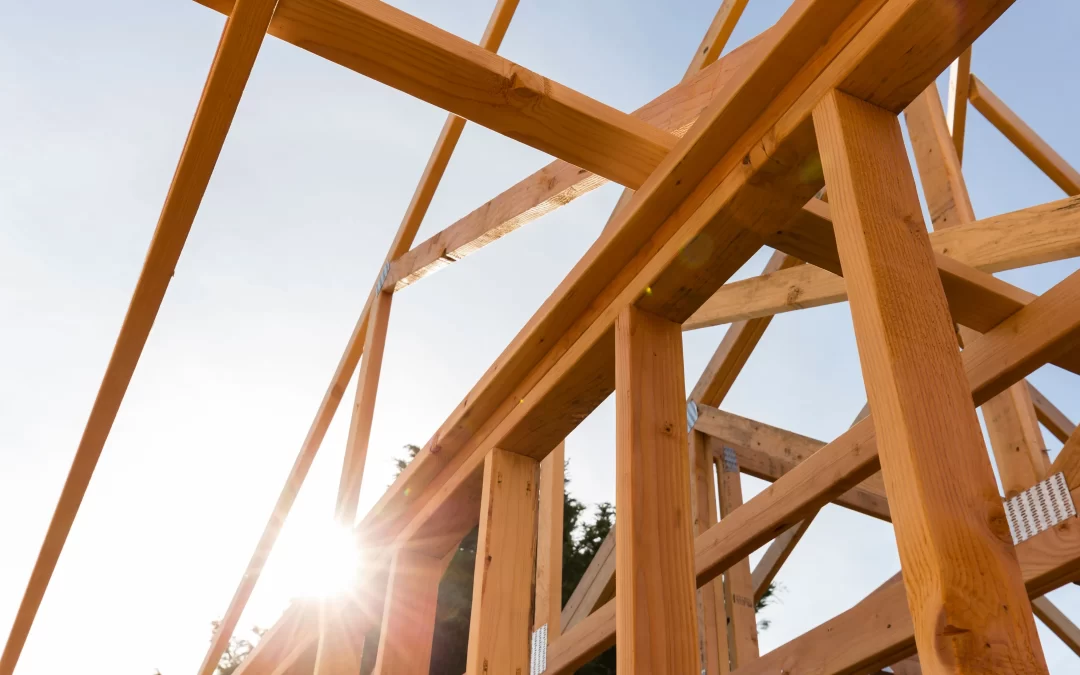As we teeter on the precipice of a rapidly escalating climate crisis, it is becoming clear that the construction sector, a traditionally resource-heavy industry, must reconsider its operational paradigms and strategically embrace eco-friendly methods and materials. The harsh reality is that construction and building operations, in their current forms, contribute alarmingly to the global carbon footprint, accounting for a sobering one-third of the world’s total carbon emissions.
Cement holds a significant and disproportionate responsibility for this environmental burden. Cement production alone contributes to an estimated 8 percent of global carbon emissions, highlighting the urgent need for alternative construction materials.
Steel production is also a significant contributor to environmental concerns. Its manufacturing processes are not only highly energy-intensive but also result in substantial carbon emissions, exacerbating the climate crisis.
However, within this gloomy outlook, there emerges a beacon of hope: wood. Wood, in contrast to cement and steel, is a renewable material sourced directly from nature. It also has the unique ability to act as a carbon sink, effectively absorbing carbon dioxide from the atmosphere, and storing it. As we look toward the future of sustainable construction, wood could play a major role in stopping the devastating effects of climate change.
A New Timber Boom in the US
During the 1990s, a significant development happened in Central Europe’s architecture and construction industries. Builders began to use a material vastly different from conventional wood. These new components resembled robust wooden sandwiches, with layers arranged and glued in such a way that the grains intersected at perpendicular angles, thereby enhancing their structural integrity. This material, known as cross-laminated timber, or CLT, began to feature prominently in buildings across Europe.
Soon, the use of CLT and related materials such as glued laminated beams and columns, collectively referred to as mass timber, expanded to North America. While architects were enthusiastic about these materials, both they and the broader construction sector faced a learning curve in implementing this new construction method.
Certain regulatory constraints in the US, which prohibited wooden structures above specific heights due to fire risks (evidenced by historical events such as the Great Chicago Fire), presented an obstacle. An exception was made for a 284-foot apartment tower in Milwaukee, Wisconsin, which required special permission and now stands as the tallest mass timber building in the world.
A relaxation in these code restrictions occurred several years ago following comprehensive safety testing. This change coincided with the emergence of numerous companies’ environmental, social, and governance (ESG) goals, thereby stimulating a surge in timber construction.
Consequently, there has been a surge in proposals for timber high-rises across the nation. Walmart is currently in the process of constructing what is claimed to be the largest mass timber corporate campus in the world, covering 350 acres in Bentonville, Arkansas. Google is also engaged in the construction of wooden buildings in Sunnyvale, California.
Data gathered by the Wood Products Council, which monitors US timber building projects, affirms this growth trend. The number of such projects increased from 69 in 2013 to 755 by the end of 2022. Including projects still in the design phase, the total count is currently projected to be 1,677.
What Are the Environmental Benefits of Wood Buildings?
Timber construction offers numerous ecological benefits. If the popularity of wood in new construction continues to grow at its current rate, the industry could dramatically reduce its carbon footprint and make a major difference in reducing global carbon emissions.
Choosing timber for construction cuts down on a building’s embodied carbon (the carbon emissions produced while creating the structure) because it doesn’t take as much energy to produce. Not only that, but timber is excellent at storing carbon, keeping it locked away within the wood and stopping it from escaping back into our air as carbon dioxide.
By implementing smart forestry practices, we can ensure that for every tree harvested, a new one is replanted, maintaining a continuous cycle of trees actively sequestering carbon dioxide from our atmosphere. This boosts our carbon-capturing capacity and contributes to sustainable environmental efforts. And if we craft our buildings with the end in mind, designing them for easy disassembly and material recycling, that timber can be put to work repeatedly.
Timber possesses inherent eco-friendly characteristics, solidifying its position as a top-notch renewable resource. However, when combined with engineered wood products, timber’s carbon-capturing abilities reach new heights, maximizing its potential as a sustainable and environmentally beneficial material.
Timber Could Usher in a New Era of Sustainable Construction
While the construction industry has historically been a significant contributor to environmental degradation, the tides are turning with the advent of materials like CLT and other mass timber products. Their environmental credentials, particularly in terms of carbon storage and renewability, make them not just an alternative but a superior choice for a greener future. Coupled with sustainable forestry practices and smart building designs that factor in end-of-life material reuse, wood construction could make a major difference in fighting the climate crisis.

